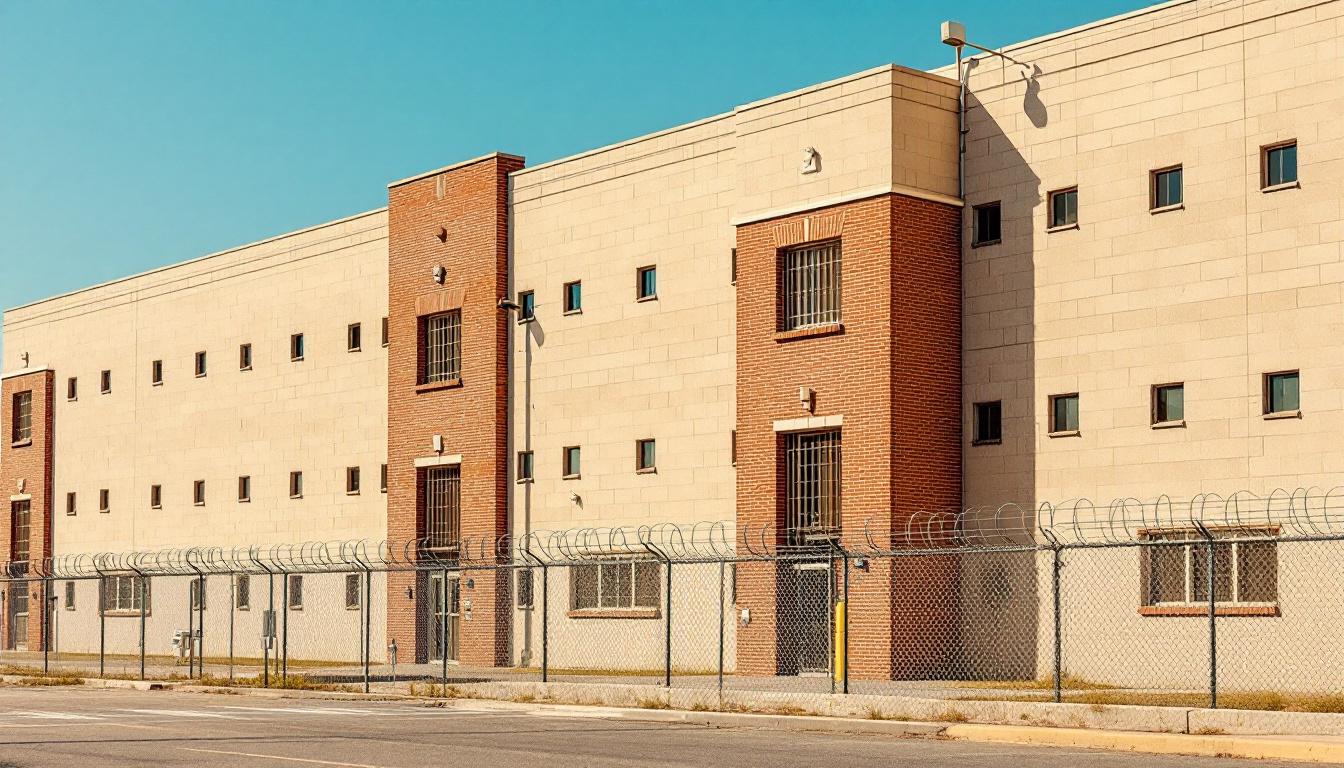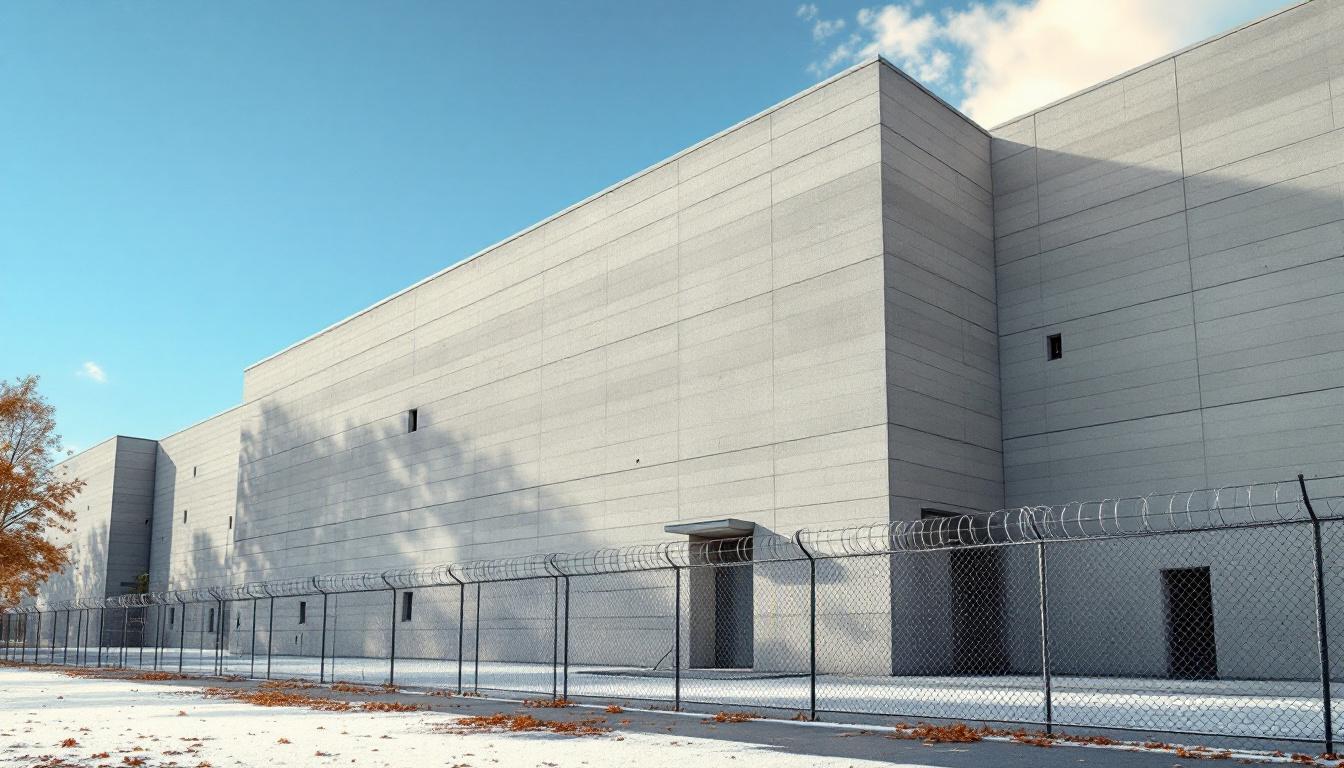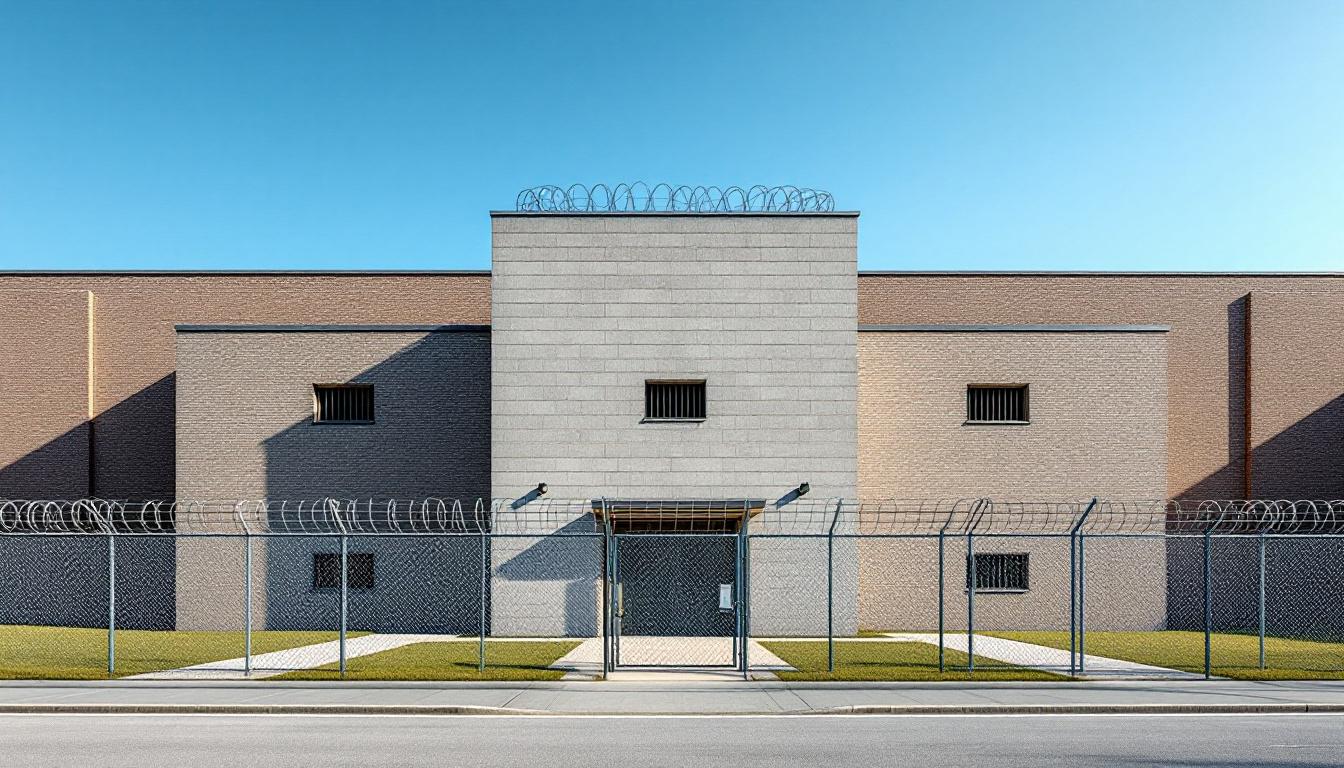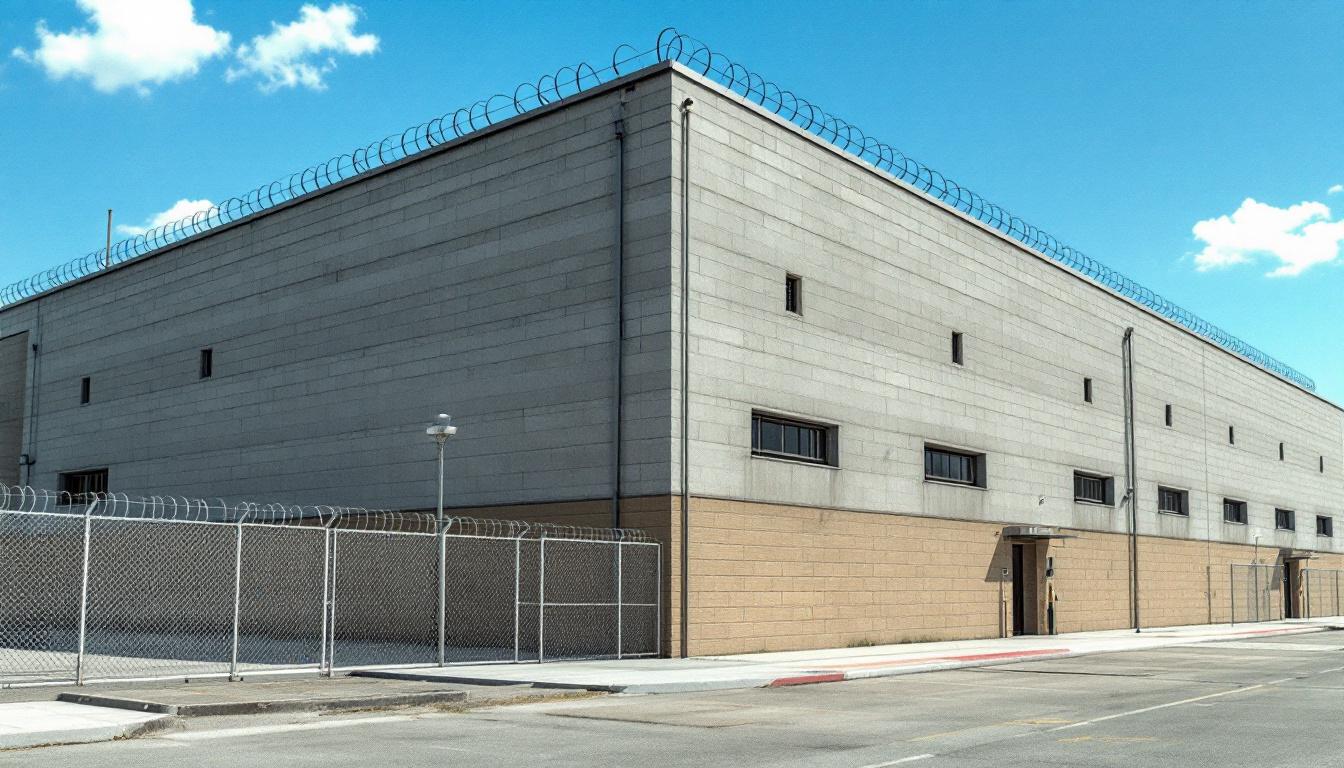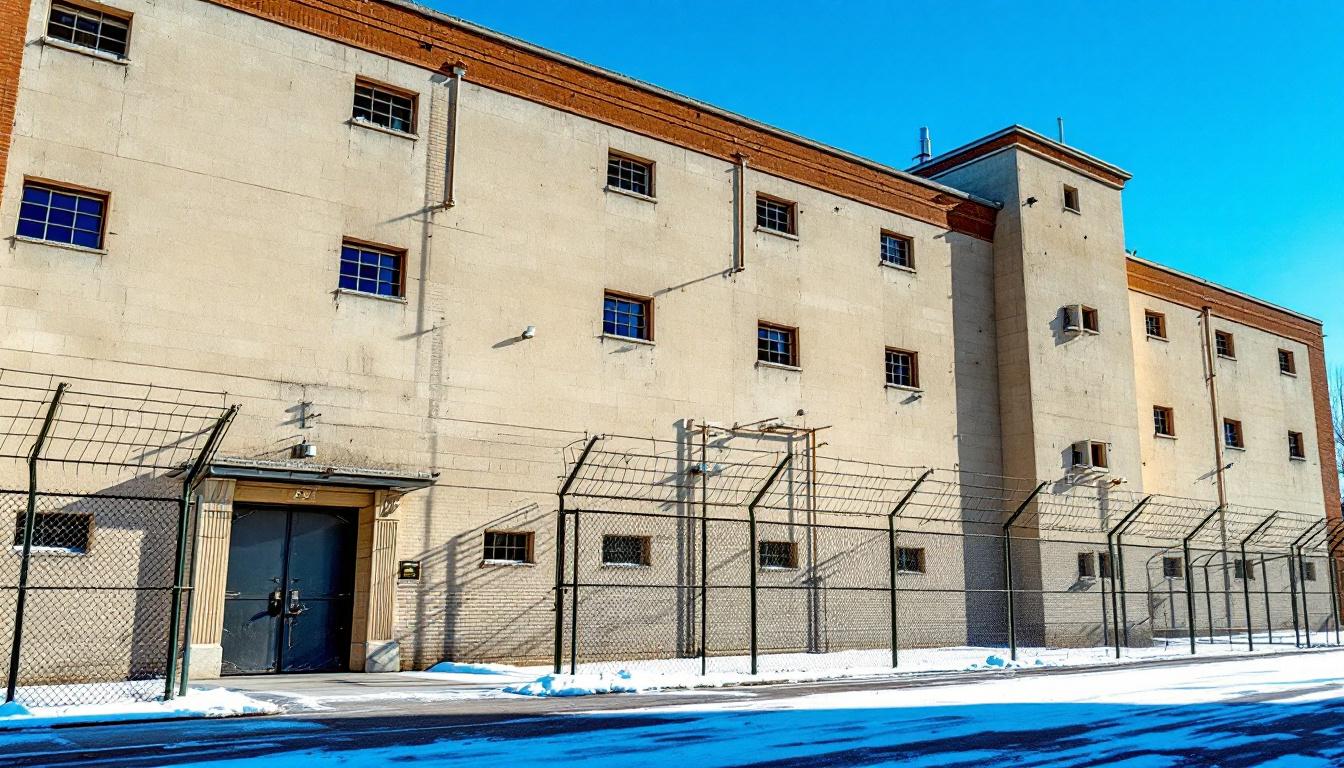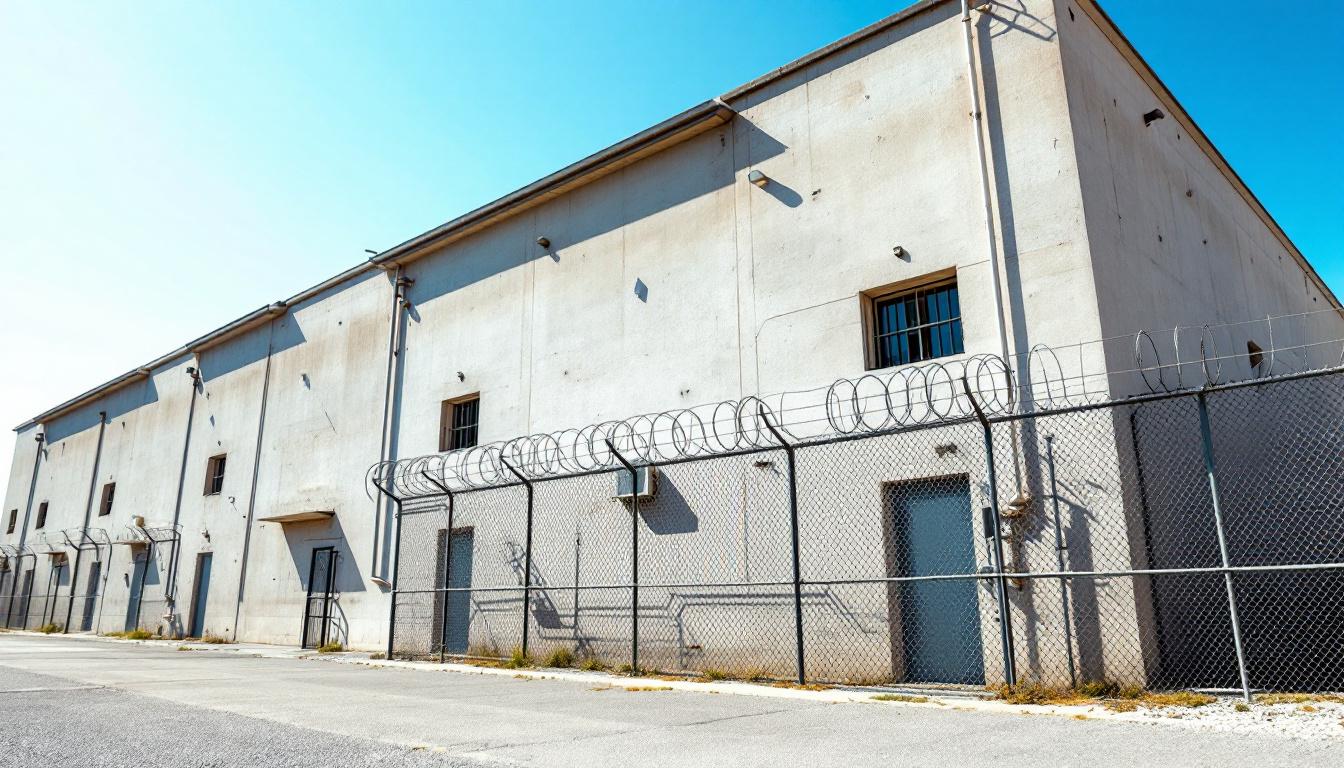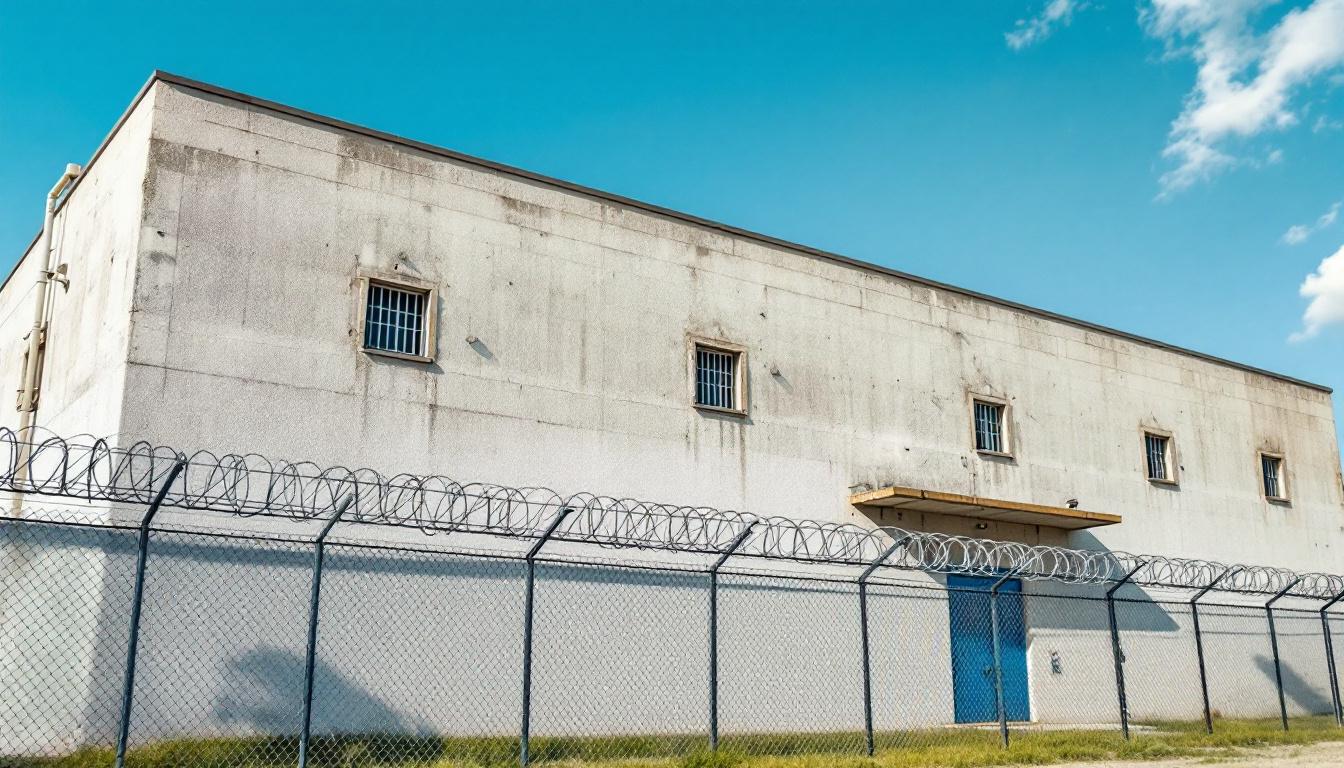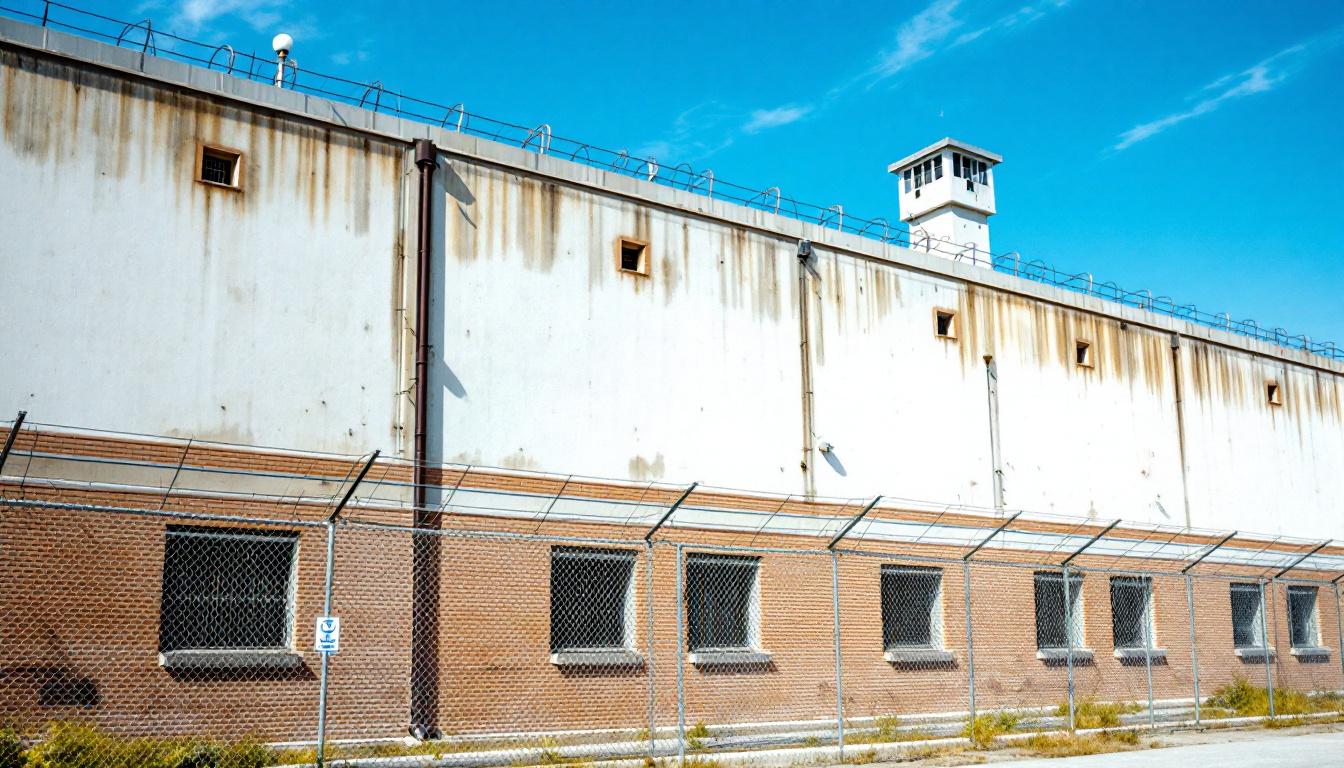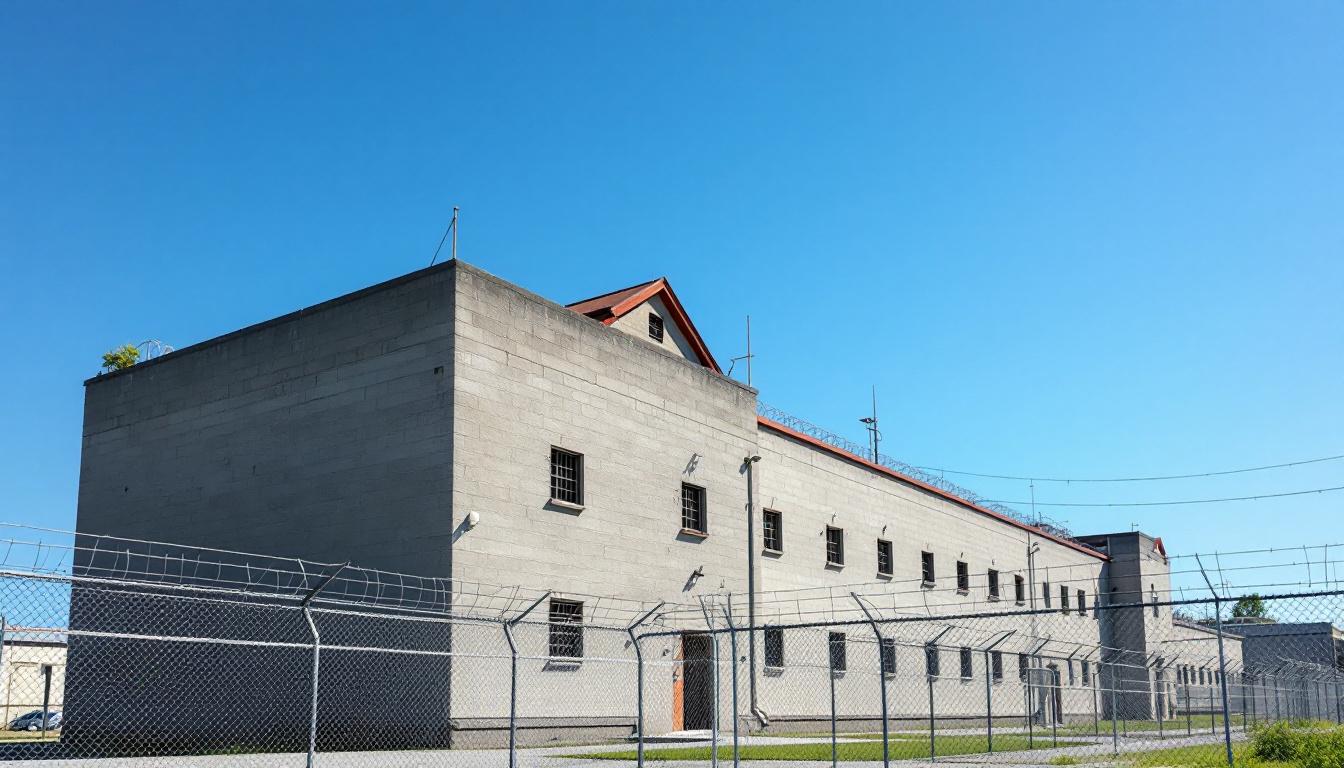
Quick Navigation
How to contact an inmate at Souza-Baranowski Correctional Center
This comprehensive guide will walk you through how to connect with an inmate at Souza-Baranowski Correctional Center. Follow the steps below to find an inmate and send letters and photos:
- Search for the inmate using our search tool below
- Create your account or log in to Penmate
- Write your message (up to 6,000 characters)
- Send instantly - inmates receive printed copies daily
Find an Inmate
Search for an inmate to start communicating today
Tip: You can search by first name, last name, or inmate ID number
To contact a person at Souza-Baranowski Correctional Center start by searching for the person on the official facility website. Perform a search by following these steps:
- Step 1: Enter their first name and last name into the search form and click "Search"
- Step 2: Locate their inmate record
- Step 3: Write down their Inmate ID and any housing information provided
Important! Be sure to enter the person's full name. Nicknames should not be used.
How to Send Messages to Inmates

You can use your phone or computer to send emails, letters, and photos to an inmate. Messages are sent electronically to inmate tablets or kiosks at the facility. If you would like to send a message, start by searching for an inmate at Souza-Baranowski Correctional Center.
Sending Photos and Postcards

A great way to send love and support to a loved one at Souza-Baranowski Correctional Center is to send photos and postcards. It only takes a few minutes to send photos from your phone and it makes a huge difference. You can also mail postcards with words of support and inspiration, or design your own postcard for special moments like birthdays and holidays.
Important! Be sure not to send any explicit photos or they may not be approved by the facility. You can also use a photo printing app like Penmate to make sure your photos are printed at the correct size (4x6 or 3x5) and are mailed according to the rules and regulations of Souza-Baranowski Correctional Center.
Frequently asked questions about Souza-Baranowski Correctional Center
-
How long does it take to deliver a message?
If you're sending an email message your letter is usually delivered within 24-48 hours. For messages sent via mail you should expect delivery within 3-7 days. All messages will need be approved by Souza-Baranowski Correctional Center.
-
How much does it cost to send a message to Souza-Baranowski Correctional Center?
You can send a message free using your phone or mail a message via USPS for the price of a $0.60 stamp and envelope. You can also purchase credits or e-stamps from services starting at $1.99.
-
What services can I use to contact an inmate at Souza-Baranowski Correctional Center?
Penmate
You can use Penmate to send letters and photos to an inmate from your phone. It's an easy way to stay in touch during your loved one's incarceration. Use the inmate locator to find an inmate's location and contact information, then you can send messages within a few minutes.
Securus messaging
Securus may be another option for communicating with an inmate at Souza-Baranowski Correctional Center. You can create a friends and family account and purchase credits to send messages. All messages will be reviewed and must be approved by the facility.
JPay
Some county jails and state prisons may support sending messages with JPay. You must register an account with the system, find your loved one, and purchase stamps to send messages. For some locations you can also attach photos.
Smart Jail Mail
You may also check if Smart Jail Mail is available at Souza-Baranowski Correctional Center. Smart Jail Mail is operated by Smart Communications and has contracted with some state and county jails. After purchasing credits, your messages and photos are sent to the facility, printed out, and then handed out to your loved one.
-
What is the mailing address of Souza-Baranowski Correctional Center?
Mailing address:
Souza-Baranowski Correctional Center
100 Harvard Rd
Shirley, MA 01464
Phone: (978) 514-6500Business hours:
- Monday: Closed
- Tuesday: 1:00 – 3:30 PM
- 6:00 – 8:30 PM
- Wednesday: 9:00 – 11:00 AM
- 1:00 – 3:30 PM
- Thursday: 9:00 – 11:00 AM
- 1:00 – 3:30 PM
- 6:00 – 8:30 PM
- Friday: 9:00 – 11:00 AM
- 1:00 – 3:30 PM
- 6:00 – 8:30 PM
- Saturday: 9:00 – 11:00 AM
- 1:00 – 3:30 PM
- 6:00 – 8:30 PM
- Sunday: 9:00 – 11:00 AM
- 1:00 – 3:30 PM
- 6:00 – 8:30 PM
-
What are the visiting hours at Souza-Baranowski Correctional Center?
Visiting hours at Souza-Baranowski Correctional Center vary by housing unit and security level. Generally, visits are scheduled on weekends and holidays, with some facilities offering weekday visits. Contact the facility directly at (978) 514-6500 or check their website for the current visiting schedule. Visits typically last 30-60 minutes and must be scheduled in advance.
-
What items are prohibited when sending mail to Souza-Baranowski Correctional Center?
Prohibited items typically include: cash, personal checks, stamps, stickers, glitter, glue, tape, staples, paperclips, polaroid photos, musical or blank greeting cards, hardcover books, magazines with staples, and any items containing metal or electronics. Only send letters on plain white paper with blue or black ink. Photos must be printed on regular photo paper (no Polaroids). Always check with Souza-Baranowski Correctional Center for their specific mail policies.
-
How do I send money to an inmate at Souza-Baranowski Correctional Center?
You can send money to an inmate at Souza-Baranowski Correctional Center through several methods: 1) Online using JPay, Access Corrections, or the facility's approved vendor, 2) Money orders mailed directly to the facility with the inmate's name and ID number, 3) Kiosks located in the facility lobby, or 4) Over the phone using a credit or debit card. Fees vary by method, typically ranging from $2.95 to $11.95 per transaction.
-
Can I schedule a video visit with an inmate at Souza-Baranowski Correctional Center?
Many facilities now offer video visitation as an alternative to in-person visits. At Souza-Baranowski Correctional Center, video visits may be available through services like Penmate, Securus Video Connect, GTL, or ICSolutions. Video visits typically cost $10-20 for 20-30 minutes and must be scheduled in advance. You'll need a computer or smartphone with a camera and reliable internet connection. Contact the facility for their specific video visitation policies and approved vendors.
-
What identification do I need to visit an inmate at Souza-Baranowski Correctional Center?
All visitors must present valid government-issued photo identification such as a driver's license, state ID, passport, or military ID. Minors must be accompanied by a parent or legal guardian who can provide the minor's birth certificate. Some facilities require visitors to be on the inmate's approved visitation list, which may require a background check. Contact Souza-Baranowski Correctional Center for specific ID requirements and visitor approval procedures.
-
How can I find out an inmate's release date?
To find an inmate's release date at Souza-Baranowski Correctional Center, you can: 1) Use the online inmate search tool if available, 2) Call the facility's records department, 3) Contact the inmate's case manager or counselor, or 4) Have the inmate provide this information during a call or visit. For privacy reasons, some facilities only release this information to immediate family members.
Facility Overview
Contact Information
Souza-Baranowski Correctional Center100 Harvard Rd
Shirley, MA 01464
Phone: (978) 514-6500
Official Website

About Souza-Baranowski Correctional Center
Maximum security operations and reception services define the Souza-Baranowski Correctional Center, a Massachusetts Department of Correction facility operating in Lancaster. Located at 1671 Shirley Road, this correctional center serves as the primary entry point for all newly incarcerated men entering DOC custody, housing the Department’s reception and diagnostic center alongside its maximum security housing units.
The facility maintains a comprehensive visiting program designed to support family connections throughout the incarceration process. With multiple housing units including K1, H1, J1, G1, G2, H2, and J2, Souza-Baranowski operates distinct visiting schedules that accommodate both contact and non-contact visits depending on security classifications. The center requires advance scheduling for all visits, with appointments available between 24 hours and 10 days in advance through the VR Sergeant. This structured approach to visitation reflects the facility’s commitment to maintaining family relationships while ensuring security protocols are met.
Operating in the Lancaster area with a Shirley mailing address, Souza-Baranowski Correctional Center typically provides the standard range of correctional services expected at a maximum security facility. The reception and diagnostic function means the facility often serves as individuals’ established experience within the Massachusetts correctional system, making its role in assessment and initial programming particularly significant for long-term rehabilitation outcomes. The facility’s location in central Massachusetts provides accessibility for families throughout the region while maintaining the security infrastructure necessary for maximum security operations.
Programs & Services
As the reception and diagnostic center for all newly incarcerated men entering Massachusetts Department of Correction custody, Souza-Baranowski Correctional Center (SBCC) plays a crucial role in assessment and program placement within the correctional system. This maximum security facility typically conducts comprehensive evaluations to determine appropriate housing, security levels, and program needs for incoming individuals. The reception process may include medical and mental health screenings, educational assessments, and risk evaluations that help guide program assignments and treatment planning.
Educational and vocational programming at SBCC likely includes basic literacy instruction, GED preparation, and skills-based training opportunities designed to support successful reentry. The facility may offer substance abuse counseling programs, mental health services, and cognitive behavioral interventions that address underlying factors contributing to criminal behavior. Religious services and chaplaincy programs are typically available to support spiritual needs, while recreational activities and library services may provide constructive outlets during incarceration.
Given its role as a reception center, SBCC often serves as a gateway where individuals are connected with appropriate long-term programming based on their assessed needs and sentence length. The facility may coordinate with other Massachusetts correctional institutions to ensure continuity of care and program participation. Support services typically include case management, reentry planning assistance, and coordination with community resources to help prepare individuals for eventual release and successful community reintegration.
Daily Life & Visitation
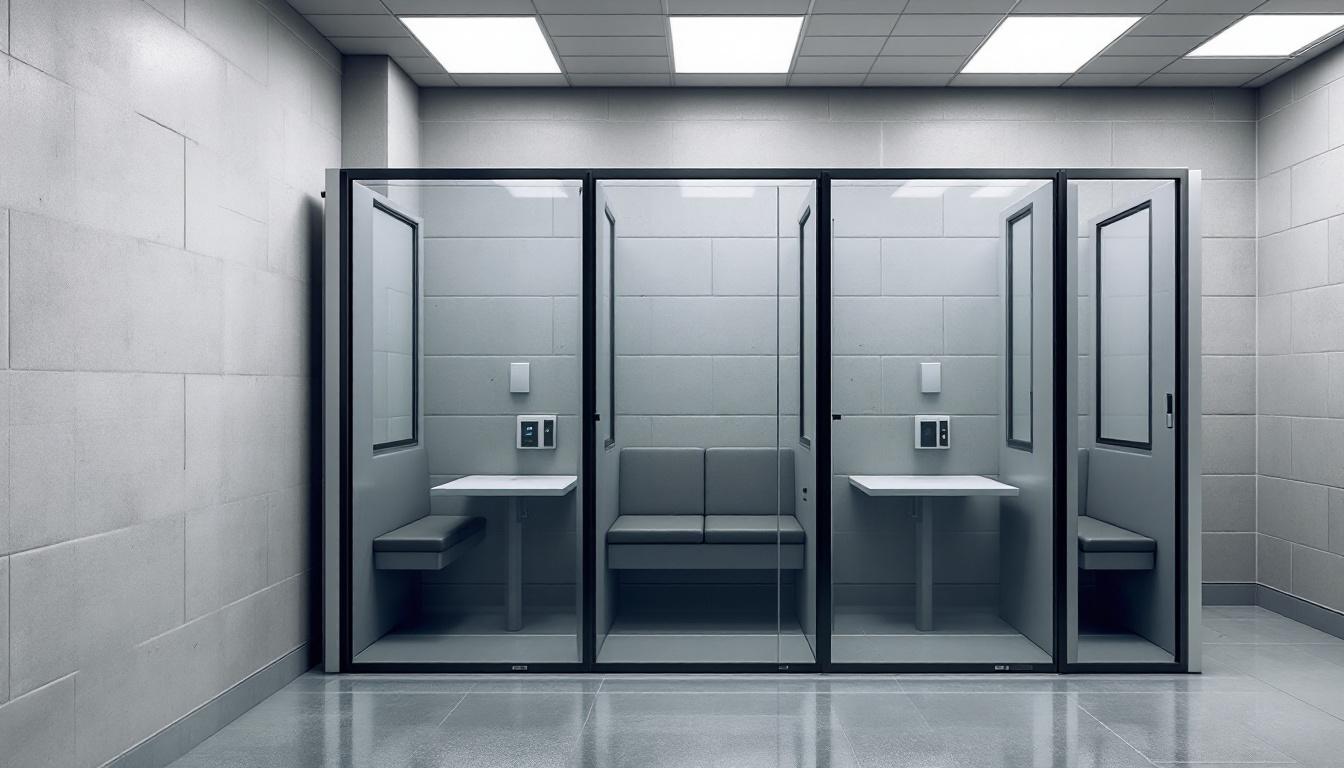
The complex visiting schedule at Souza-Baranowski Correctional Center reflects the facility’s role as Massachusetts’ primary maximum security institution and reception center for newly incarcerated men. With different units maintaining distinct visiting hours throughout the week, families must plan carefully - Unit K1 offers afternoon visits on Tuesdays and Saturdays with extended hours until 4:30pm, while other units alternate between afternoon and evening sessions. All visits require advance scheduling between 24 hours and 10 days ahead by calling the VR Sergeant between 1pm and 8pm daily, emphasizing the structured nature of family connections within this high-security environment.
As both a maximum security facility and the Department of Correction’s reception and diagnostic center, SBCC typically maintains highly regulated daily routines designed around security protocols and intake processing. Newly arrived individuals often undergo comprehensive evaluations and orientation procedures, while long-term residents may participate in structured programming when available. The facility’s various housing units - including K1, H1, J1, and the G2, H2, J2 sectors - likely operate on different schedules to manage population flow and maintain security, with some areas designated for contact visits while others require non-contact visitation arrangements.
Located on Shirley Road in Lancaster, the facility’s operations reflect its dual mission of housing maximum security inmates while processing new arrivals to the state system. Daily life revolves around the institutional schedule, with meals, counts, and any available programming occurring at designated times. The distinction between “Low Sector” and “High Sector” housing suggests different security levels within the facility, potentially affecting daily privileges and movement patterns for residents in each area.
Ready to Connect?
Start communicating with your loved one today
Search for an Inmate

